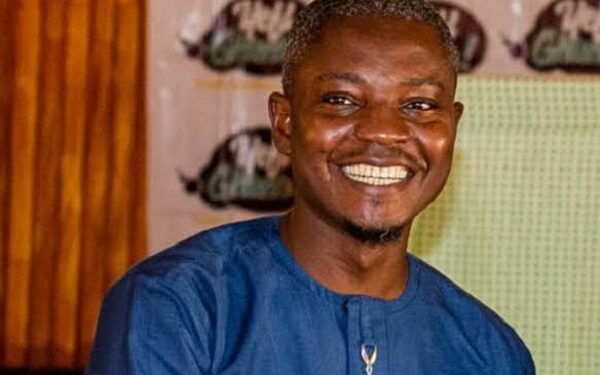TAMALE, Sept 30 (The African Portal) – The youth of Ghana are excited!!! A new government came with the establishment of the Ministry for Youth Development and Empowerment (MYDE). A great milestone in the empowerment of youth in the country after decades of advocacy for the decoupling of the youth from the ministry of Sports, allowing for more focused policies and programmes. Thanks to the current government led by His Excellency, President John Dramani Mahama!
The Ministry and Its Agencies -NYA in focus
The Ministry of Youth Development and Empowerment has several agencies under its oversight including the National Youth Authority (NYA) which is the focus of this article. The NYA, established by the National Youth Authority Act, 2016 (ACT 939), is mandated to design and implement programmes that promote the empowerment and holistic development of the youth of Ghana between the ages of 15 and 35 years. The Authority’s programmes and interventions, are currently guided by the National Youth Policy (2022 – 2032) which emphasizes coordinated interventions to harness youth potential for national growth. In line with the commitments of the government outlined in its manifesto, the NYA through the youth ministry has designed and rolled out two flagship initiatives to build vocational skills and entrepreneurial capacity among youth.
Flagships and Funding
The National Apprenticeship Programme (NAP), adopts a “MasterCraft” model, matching participants with experienced artisans (master craftsmen and women) for hands – on training in technical and vocational skills. Through this intervention, 10, 000 youth are estimated to be reached across the country with the full 2025 budget allocation of GHC 300 million covering training costs, stipends and startups kits. As of July 2025, a total of GHC 50 million (information sourced through the Right To Information Act), has been transferred to the NYA to initiate implementation.
Another initiative by the NYA is the Adwumawura which is focused on technical skills and agribusiness support, targeting 10, 000 youth annually to promote entrepreneurship and job creation. As of July 2025, Thirty Million, Six Hundred and Fifty Thousand Ghana Cedis, 10 pesewas (GHC 30,650,000.10) (information sourced through the Right To Information Act), has been transferred by the Ministry of Finance. This demonstrates early momentum toward the programme’ s goals and highlights government’s responsiveness to youth needs.
Funding challenges
If you look at these disbursements at the periphery, you might be tempted to think that, it’s a substantial amount of money given to the NYA to implement government youth flagship programmes. However, a deeper examination of broader funding mechanisms reveals persistent challenges. For instance, Parliament through the DACF Formular for 2025 approved a total of GH¢7.510 billion in accordance with Article 252 of the 1992 Constitution which imposes an obligation on the Administrator of the DACF to present to Parliament a Formula for the allocation of not less than 5 percent of the total revenues of Ghana to the District Assemblies every year. Section 17(b) of Act 939 further requires that 5% of the DACF—around GH¢378.5 million—be dedicated to the NYA to support youth programs at the district level. However, Parliament approved a paltry Forty-Five Million and Sixty Thousand Ghana Cedis (GHC 45, 060, 000.00) about 0.6% of the total DACF, representing a significant shortfall from the mandated amount.
Historically, since the full implementation of Section 17(b) of Act 939 in 2017, compliance has varied. While 2017 and 2018 saw full adherence, subsequent years have shown inconsistencies, with allocations declining relative to Ghana’s growing revenues—often due to fiscal constraints and competing priorities. From 2017 to 2024, disbursements to the NYA hovered between 40-50% of entitled amounts in some cases, undermining program scalability. In 2025, allocation further declined to 0.6%; a worrying trend. This trend, if continued into 2026, risks limiting the NYA’s impact despite rising national revenues.
What we want
In conclusion, while the new ministry and targeted programs like NAP and Adwumawura offer promising avenues for youth empowerment, adequate and consistent funding remains essential. We call on the government and the respective agencies to duly comply with the provisions of the Act 939. Stakeholders, including civil society and youth networks, should advocate for full compliance with Act 939 to ensure the DACF’s 5% allocation reaches the NYA without dilution. By addressing these funding gaps, Ghana can better equip its youth to drive economic and social progress.
See below table for comprehensive approvals:
| Year | Total DACF Allocation (GHS) | % to NYA/Youth Programme |
| 2017 | 1, 575, 935, 339.00 | 5.0% (78, 796, 767.00) |
| 2018 | 1, 812, 144, 435.00 | 5.0% (90, 607, 222.00) |
| 2019 | 2, 079, 426, 613.00 | 4.0% (83, 177, 065.00) |
| 2020 | 2, 312, 706, 550.00 | 4.0% (92, 508, 262.00) |
| 2021 | 2, 402, 331, 910.00 | 2.5% (60, 000, 000.00) |
| 2022 | 3, 342, 970, 849.00 | 1.79% (59, 685, 257.00) |
| 2023 | 4, 554, 034, 657.00 | 2.5% (113, 850, 866.00) |
| 2024 | 5, 758, 254, 325.00 | 2.0% (115, 165, 087.00) |
| 2025 | 7, 510, 000, 000.00 | 0.6% (45, 060, 000.00) |
Source : DACF Annual Approved formula 2017-2025, compiled by YEFL-GHANA.
Year Total DACF Allocation (GHS) % to NYA/Youth Programme.
The Author is a Technical Advisor for Youth, Advocacy and Gender at Youth Empowerment for Life -YEFL-GHANA
Abdul – Ganiyu Alhassan






